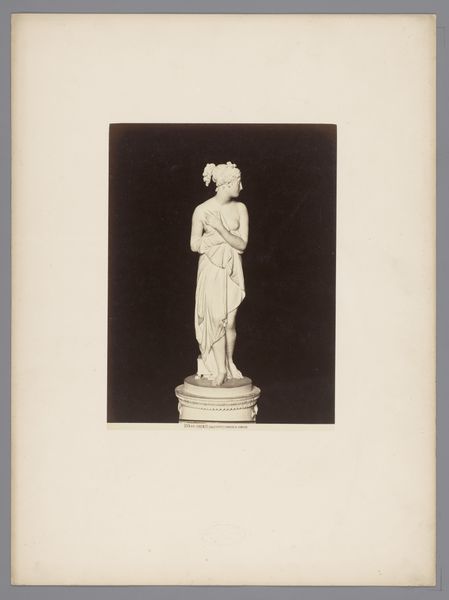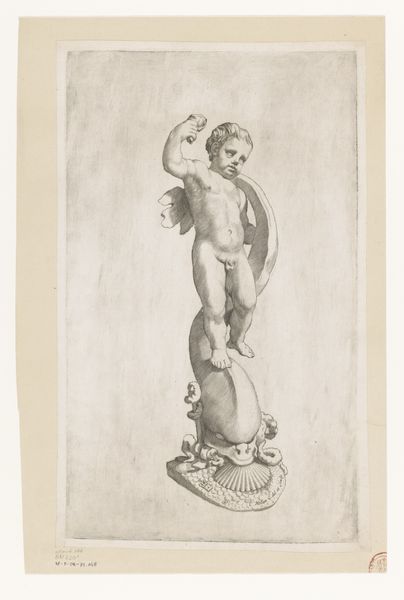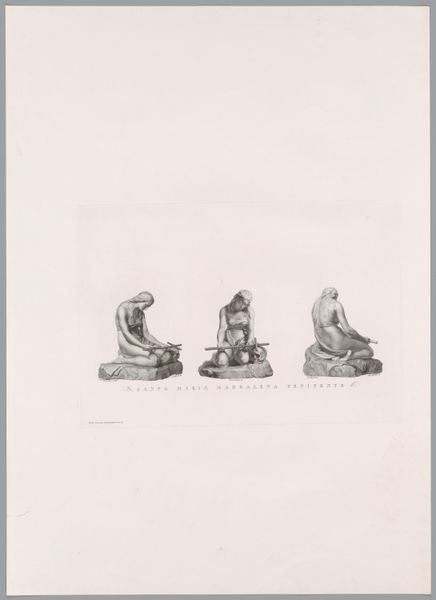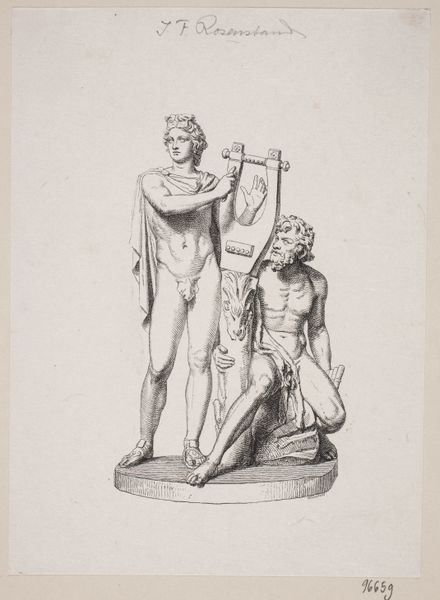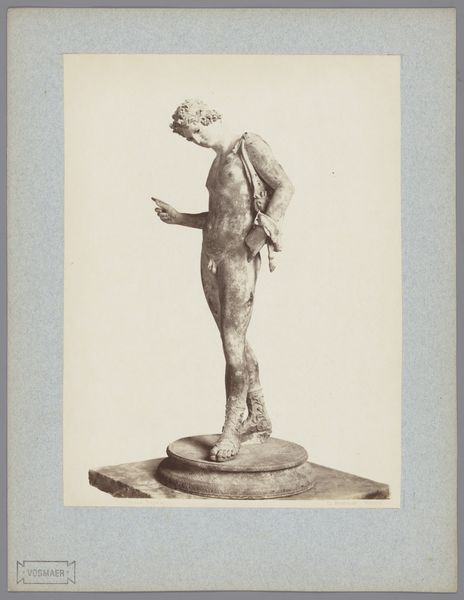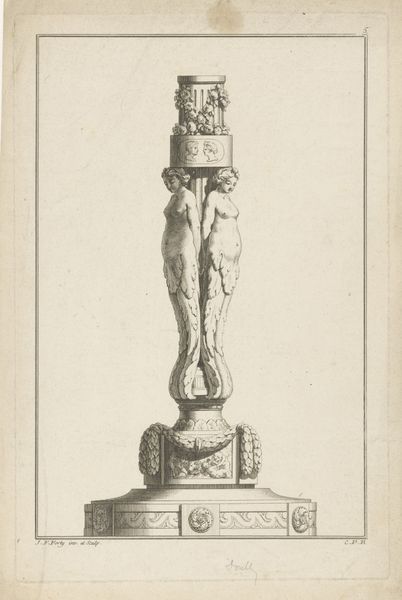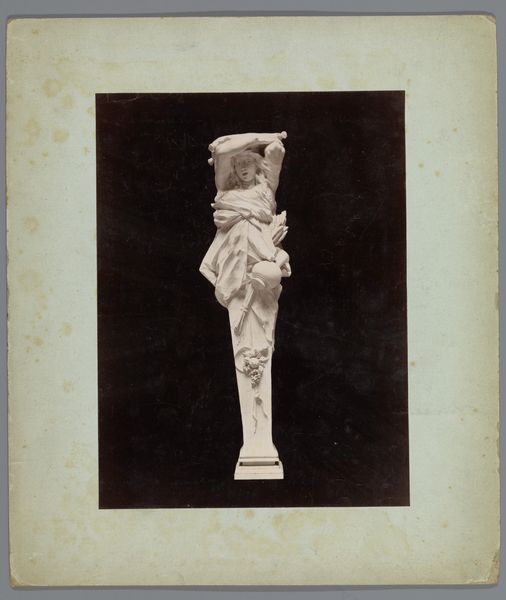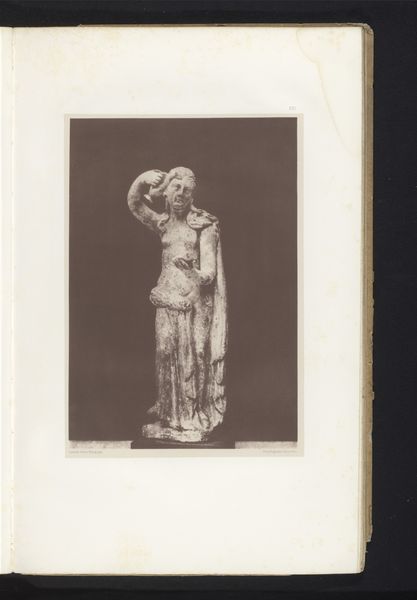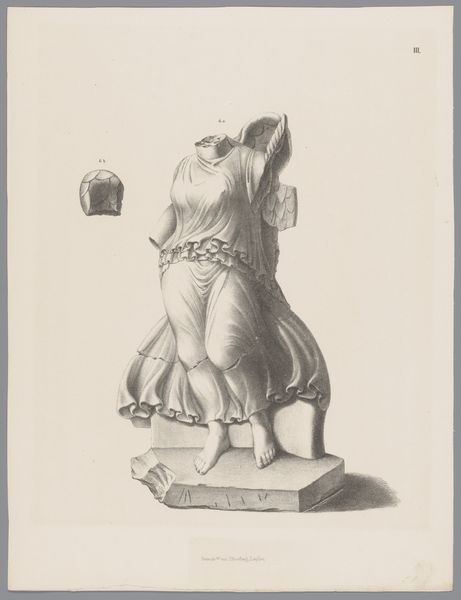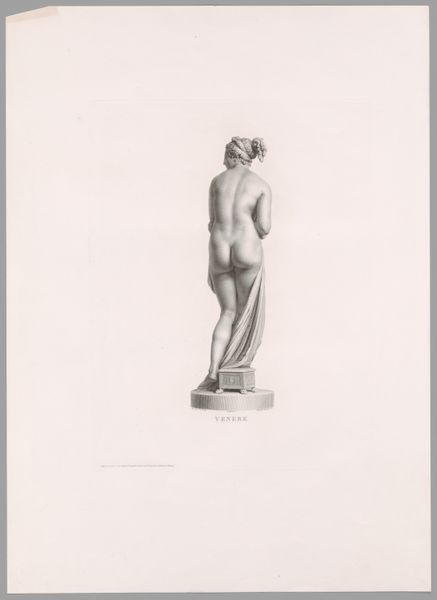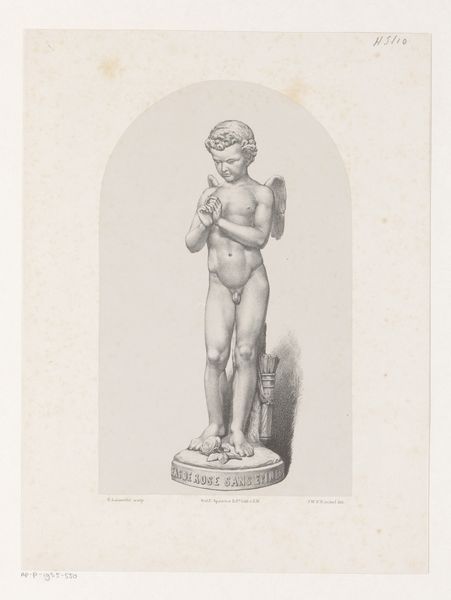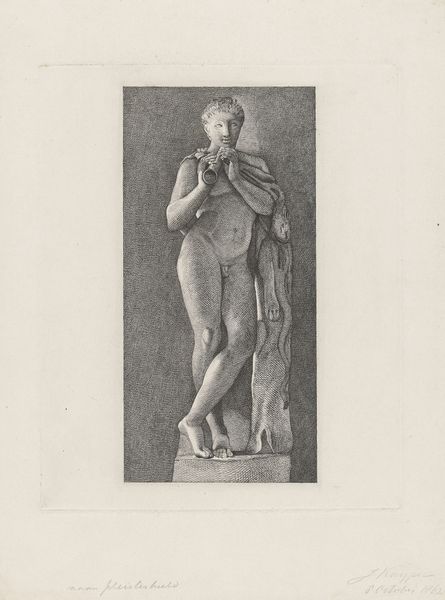
drawing, print, sculpture, pencil, marble
#
portrait
#
drawing
#
statue
# print
#
pencil sketch
#
greek-and-roman-art
#
classical-realism
#
figuration
#
ancient-mediterranean
#
sculpture
#
pencil
#
history-painting
#
marble
Dimensions: height 360 mm, width 270 mm
Copyright: Rijks Museum: Open Domain
Tiemen Hooiberg rendered these three fragments of Roman sculptures, using etching, at an unknown date. In Hooiberg’s time, the 19th century, Europe was obsessed with antiquity; but this was also a period marked by stark social inequalities. Hooiberg, as an artist, was part of a society that both revered classical ideals and grappled with the implications of modernity. The fragments themselves—a head, a torso, a draped figure—speak volumes about power, beauty, and loss. The male nudes represent idealized forms, yet they are presented as incomplete, challenging notions of perfection. The male figure, for example, appears virile and powerful, and yet is missing both his arms and head. Consider how these images might have been viewed then, and how we see them now. What does it mean to look at fragmented bodies, knowing that they once represented the height of civilization? These etchings not only depict classical sculptures, but also invite us to reflect on the legacies of power, representation, and history.
Comments
No comments
Be the first to comment and join the conversation on the ultimate creative platform.
